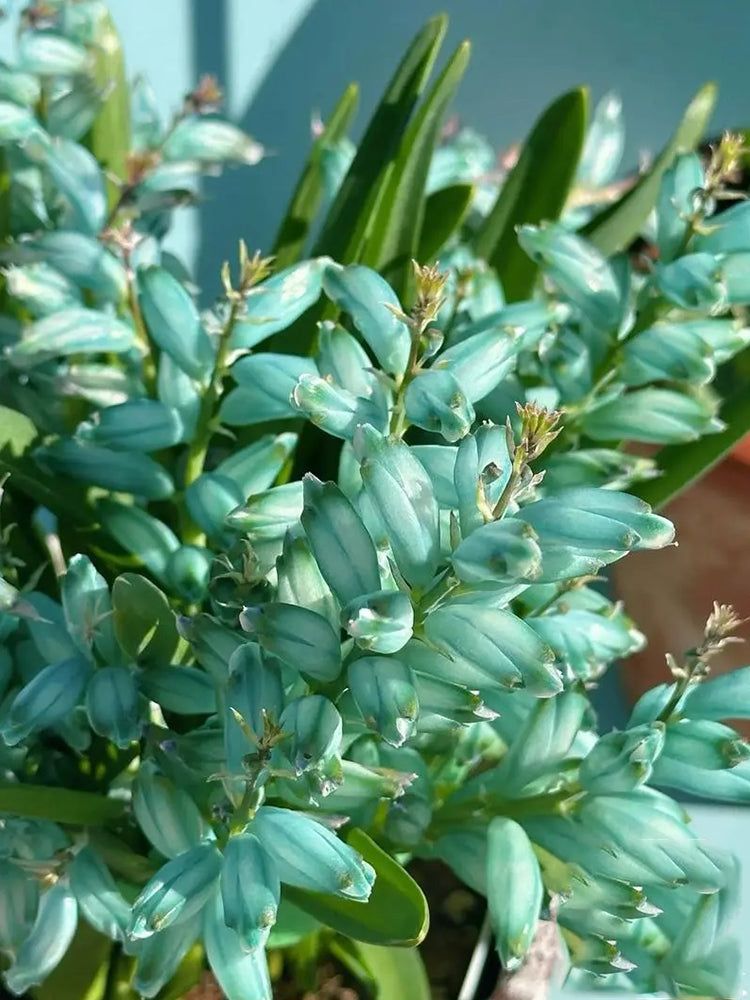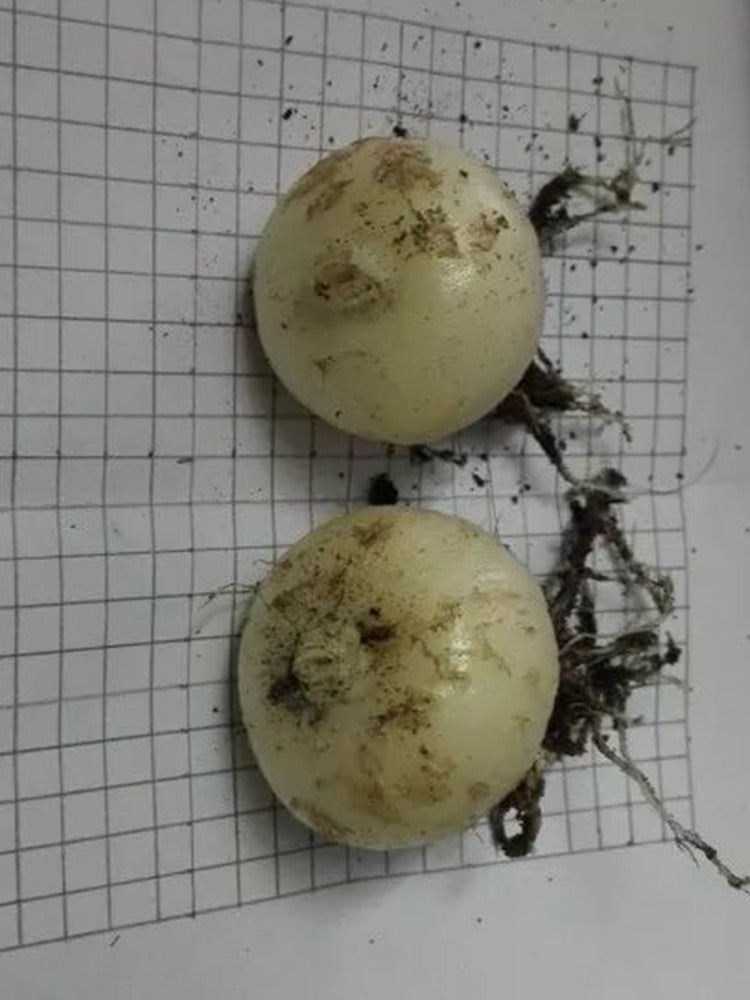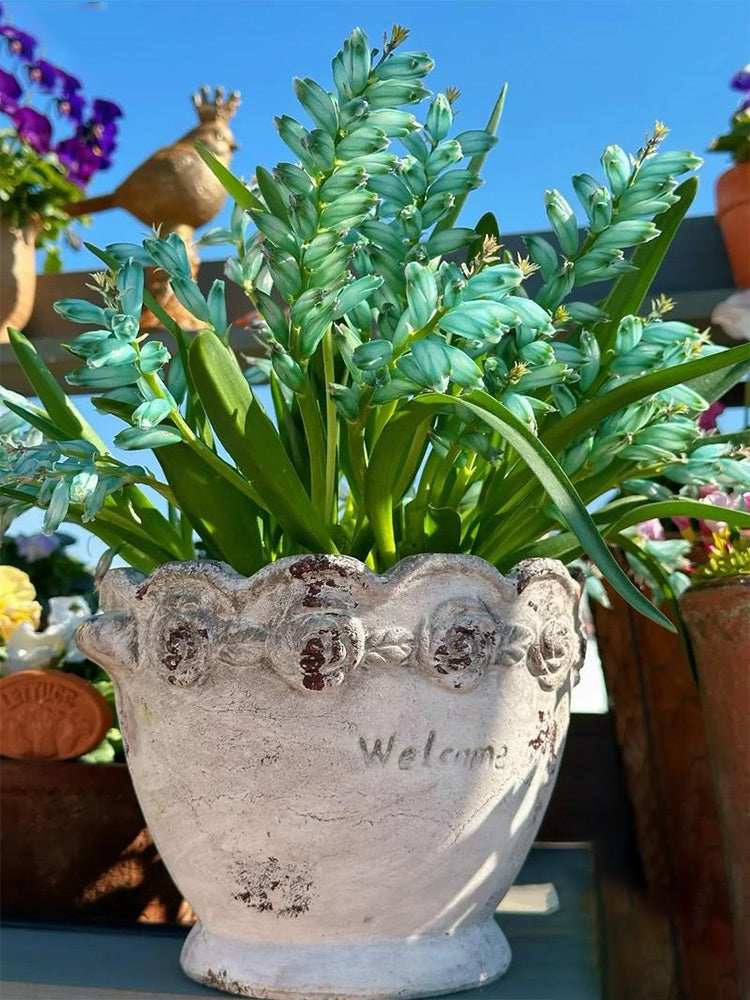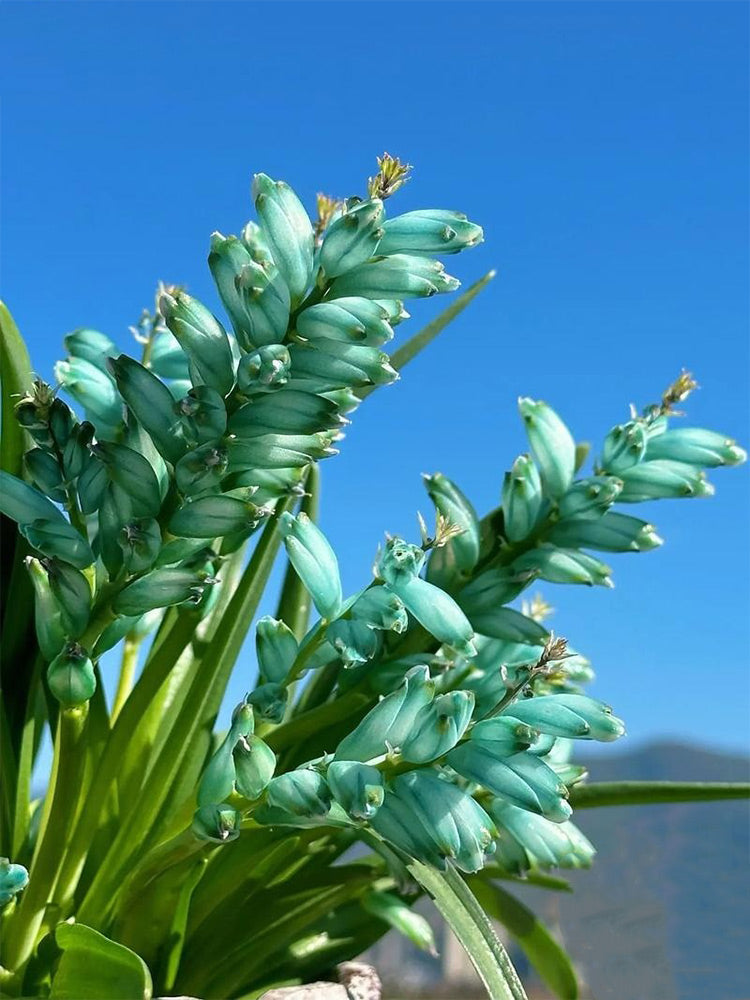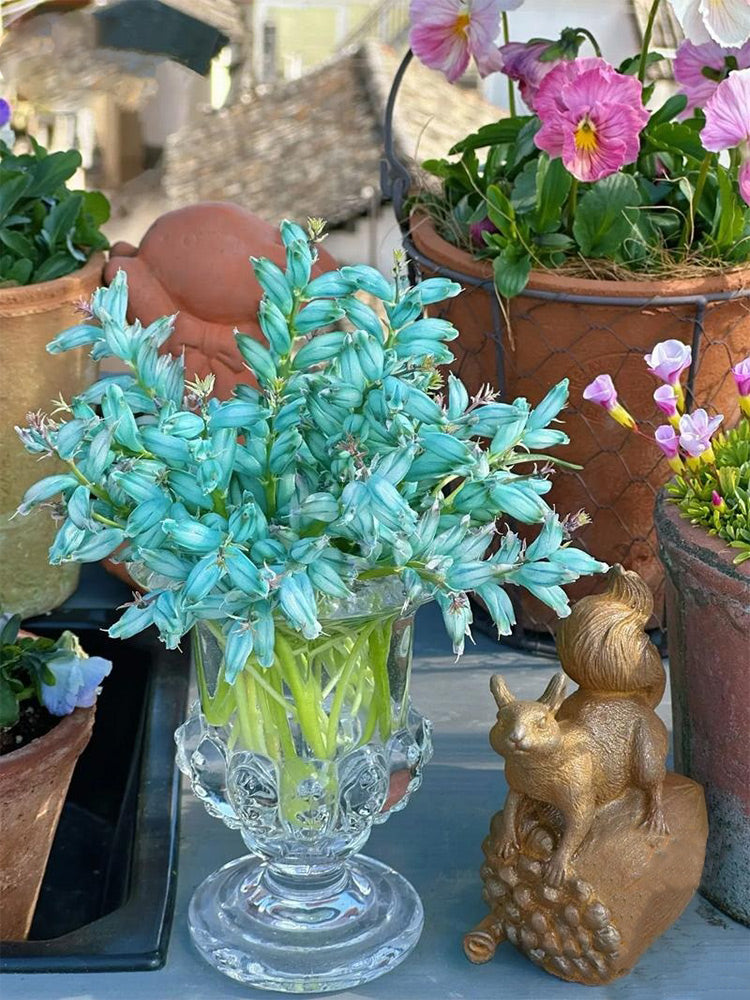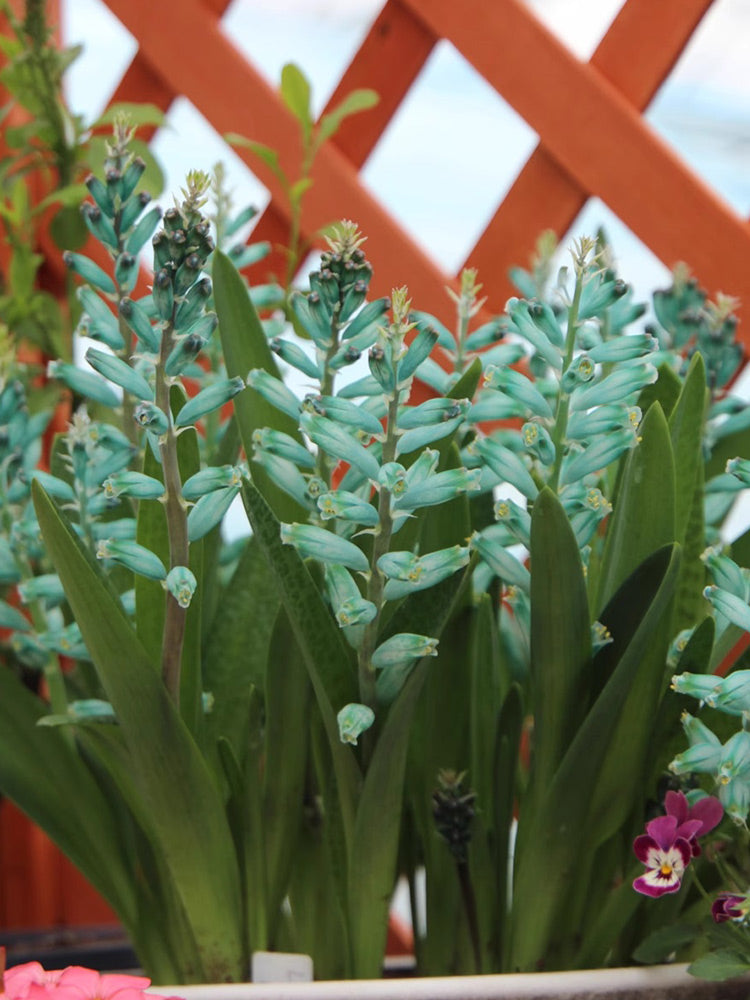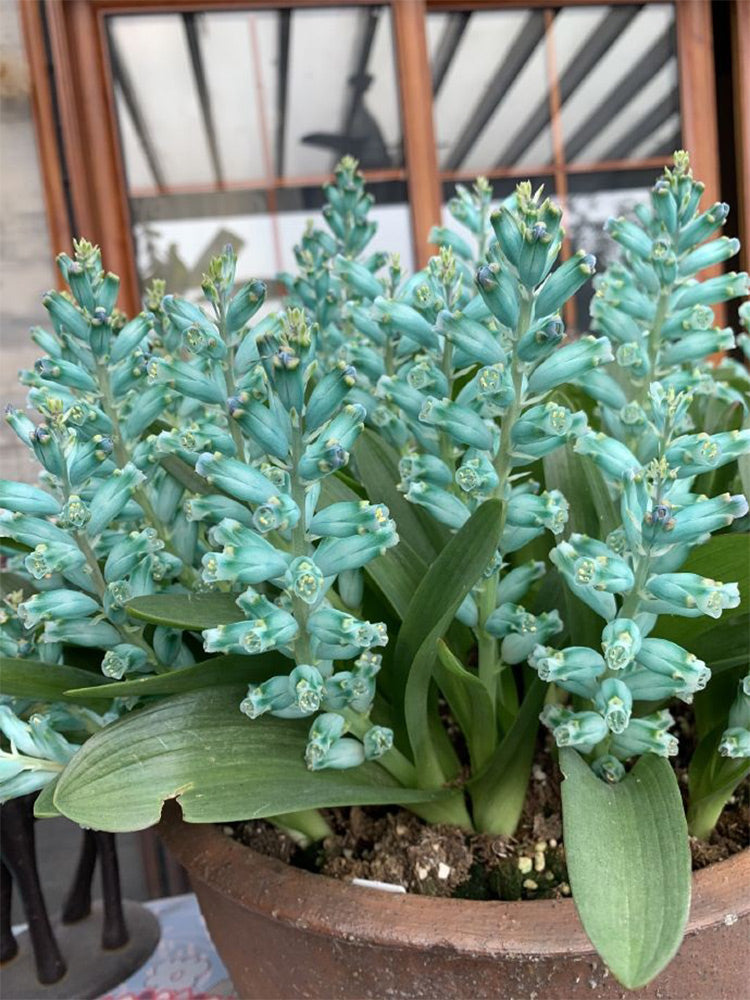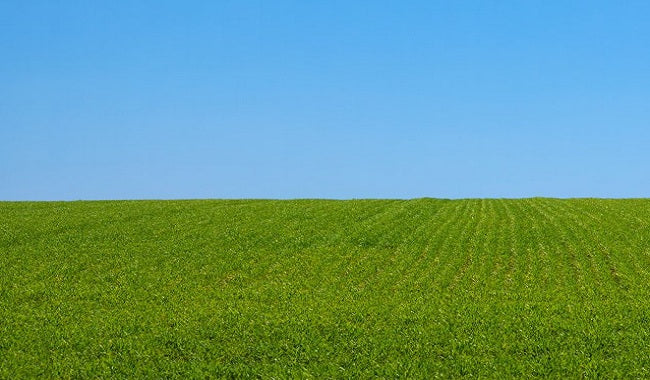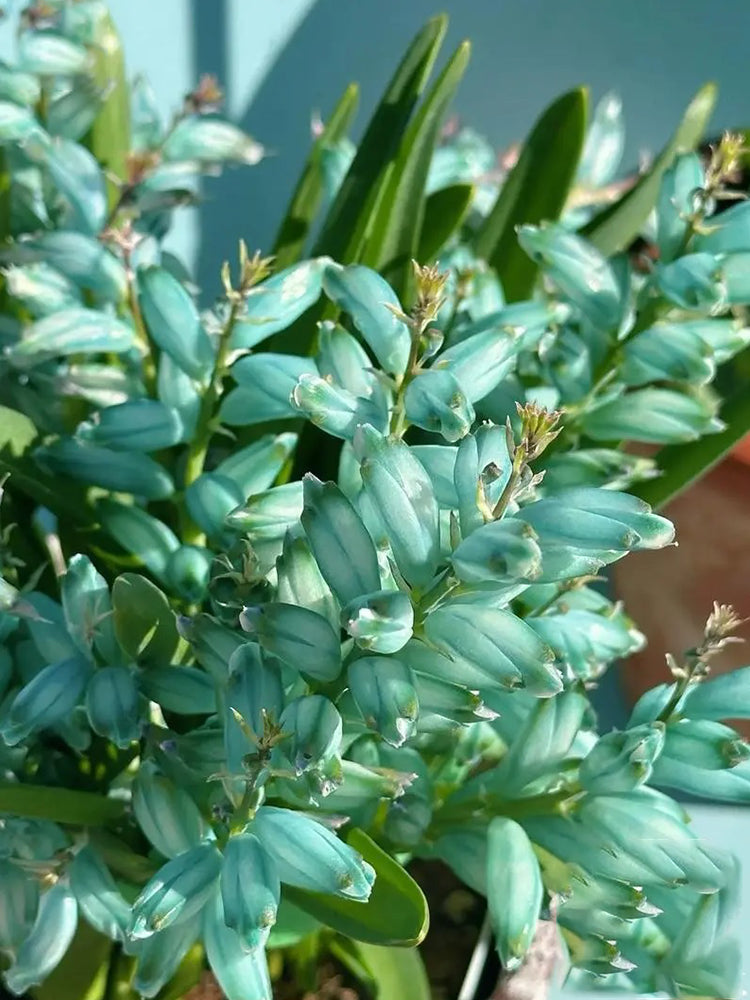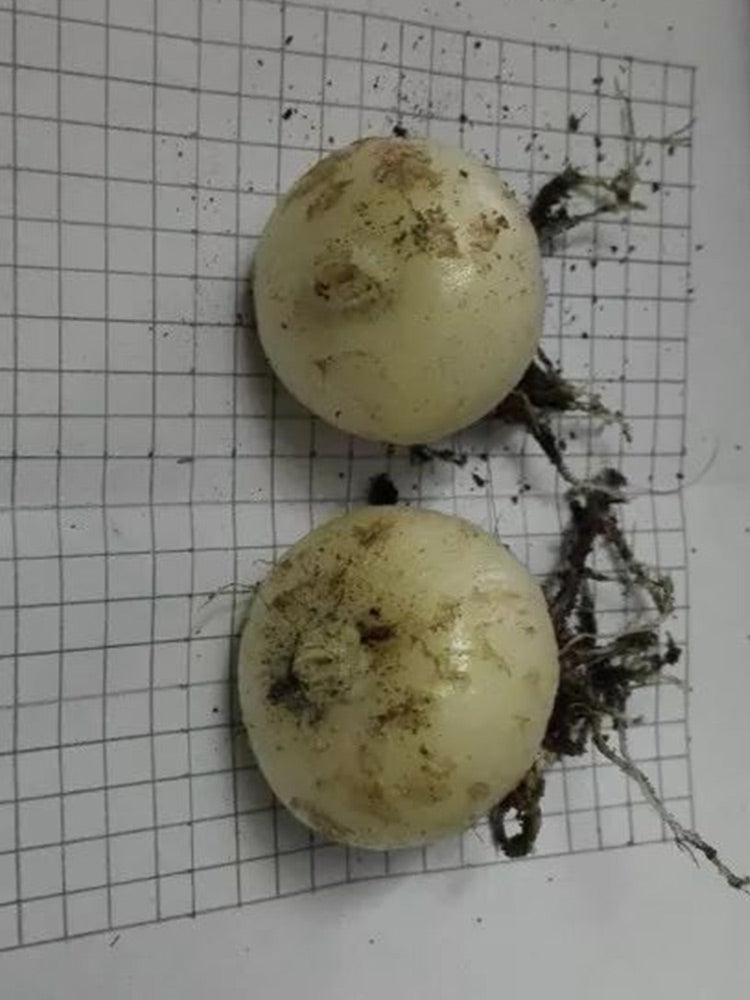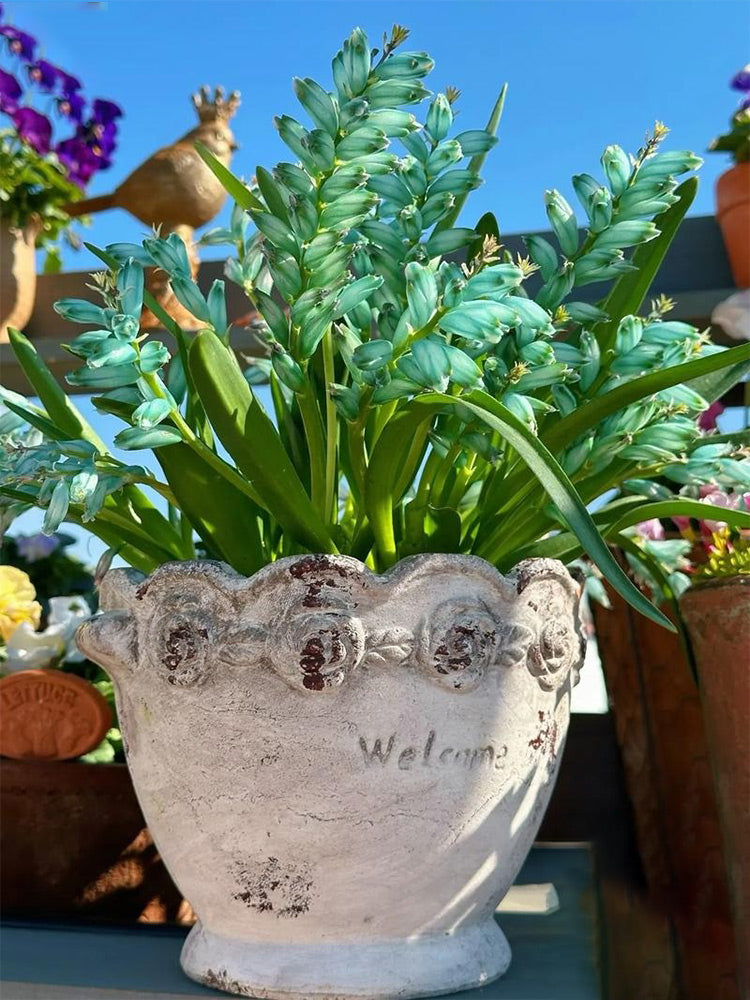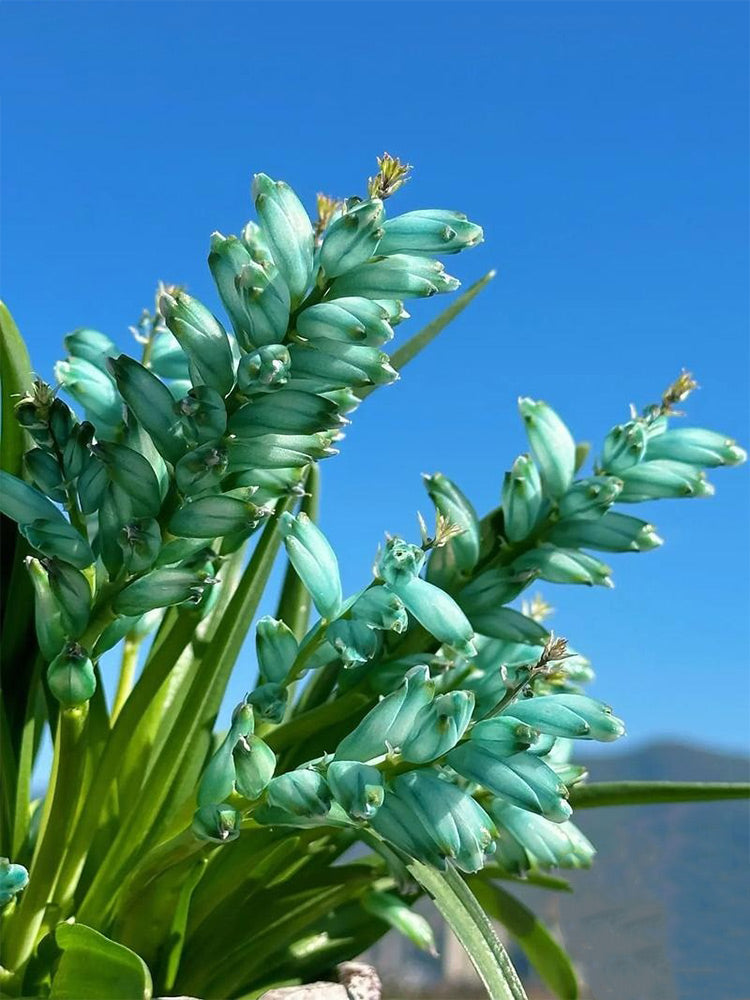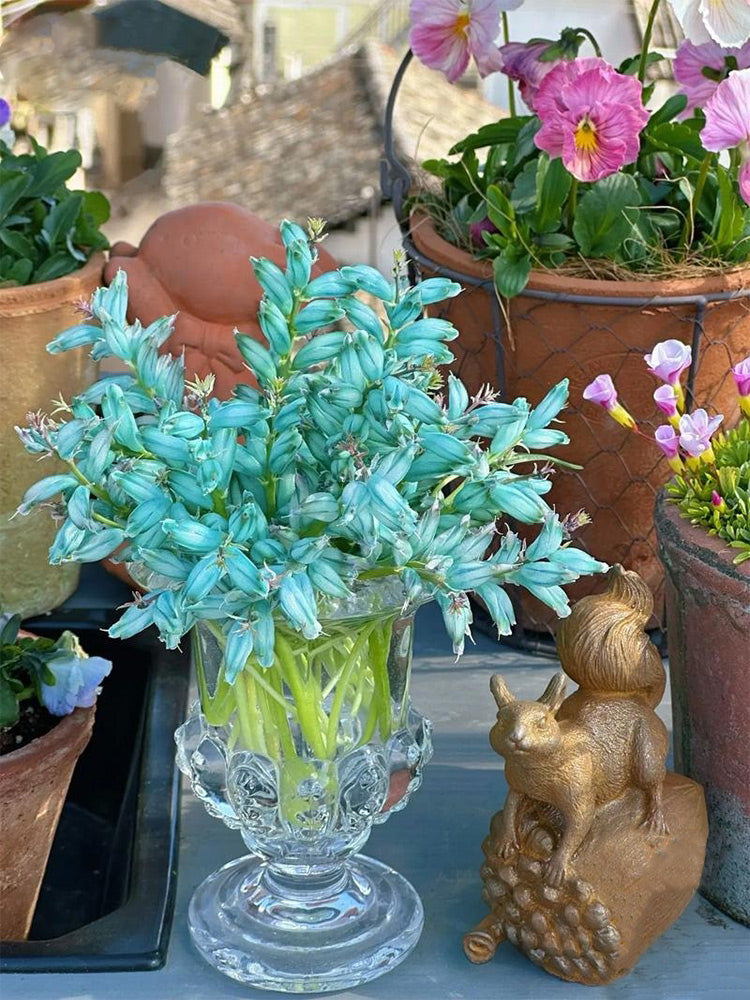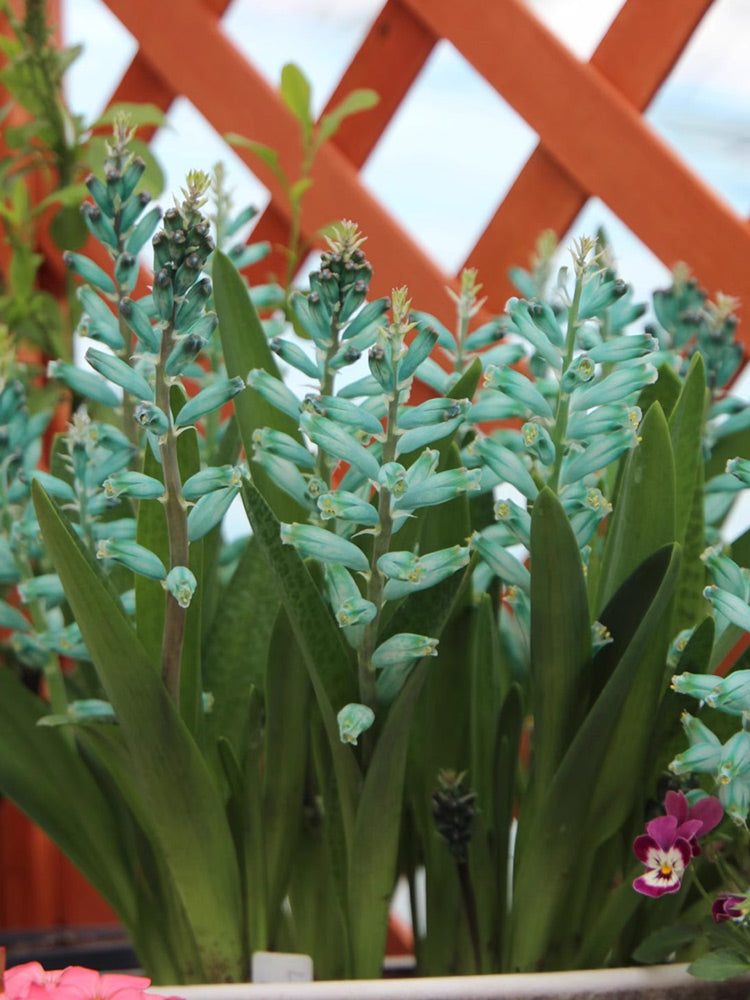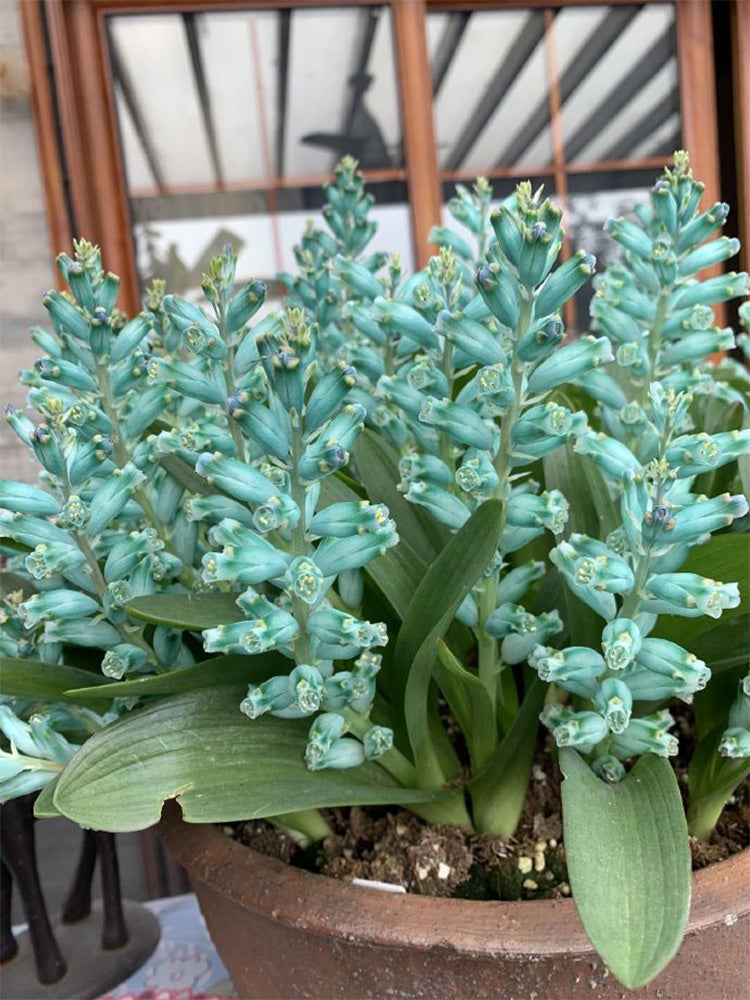BELLFARM
Lachenalia Viridiflora
Sale
Sold out
Regular price
$15.99 USD
Regular price
$30.99 USD
Sale price
$15.99 USD
Unit price
per
Couldn't load pickup availability
-
5-14 Days delivery.
-
Ship out within 24 hours.
Variety Key Traits:
Lachenalia viridiflora is a stunning bulbous perennial, known for its unique turquoise flowers with striking white tips. Growing to a height of 8-20 cm (3.1''-7.9''), each plant features two elegant leaves, sometimes adorned with dark spots. This rare winter-blooming plant showcases racemes of vibrant greenish-blue, tubular flowers, attracting pollinators such as the lesser double-collared sunbird. The epithet 'viridiflora'—Latin for green-flowered—perfectly captures its distinctive floral beauty.
◆ Specification:
🌱 Height: 8-20 cm (3.1''-7.9'').
🌱 Color: Winter-blooming with racemes of turquoise flowers with white tips.
🌱 Ideal Location: Ideal for rock gardens, containers, or as a striking indoor plant.
🌱 Attracts: Pollinators, particularly the lesser double-collared sunbird.
☛ Bulb Size:
The size of each bulb varies by species. In our shop, bulb sizes are generally categorized based on the harvest of that year. Apart from a few varieties that are naturally slow to bloom, most large and medium-sized bulbs can flower within the same year if properly cared for. Some smaller bulbs may also bloom under the right conditions.
☛ Bulb Condition:
It is normal for some bulbs to exhibit cracking, oozing sap, or peeling skin. As long as the bulb feels firm and plump when squeezed, it is healthy and viable.
☛ Upon Receiving Bulbs:
After receiving the bulbs, take them out of the bag and place them in a small paper box or bag, allowing for air circulation. Store them in a cool, well-ventilated spot. Avoid refrigerating them, as this will cause rot. Do not store in air-conditioned rooms either, as this can lead to premature sprouting. Bulbs should be kept in a dry, well-ventilated environment at room temperature.
☛ Soil Mix:
For optimal growth, use a loose, well-aerated mix. A combination of peat, perlite, and vermiculite works well, and you can add rice husk charcoal, wood ash, and slow-release fertilizer. After sprouting and once leaves have appeared, you may begin to apply water-soluble fertilizer regularly but in low concentrations. For less fuss, any well-draining, aerated soil is sufficient—avoid sand, city garden soil, or clay.
☛ Pot Size:
A single large bulb typically requires a pot with a diameter of at least 12 cm and a depth of 10 cm or more. Cover the bulb with 1-2 cm of soil. If the bulb has already sprouted, ensure the sprout is fully buried.
☛ Sunlight:
Once the leaves have emerged, expose the plant to as much sunlight as possible.
☛ Watering and Care After Planting:
After planting, water thoroughly and place the pot in a well-ventilated, bright area. Water only when the soil has dried out, and once the leaves have broken through the soil, provide ample direct sunlight. Avoid intense heat or scorching.
☛ Bulb Harvesting:
Around May, when the plant begins to yellow and wilt, stop watering. Once the leaves have fully yellowed, the bulb is ready to be dug up.
☛ Additional Tips:
Most small bulbs are not particularly sensitive to cold but are vulnerable to freezing and frost. Brief exposure to temperatures as low as -2°C is tolerable, but it’s advisable to provide protection when temperatures drop below this.
Lachenalia viridiflora is a stunning bulbous perennial, known for its unique turquoise flowers with striking white tips. Growing to a height of 8-20 cm (3.1''-7.9''), each plant features two elegant leaves, sometimes adorned with dark spots. This rare winter-blooming plant showcases racemes of vibrant greenish-blue, tubular flowers, attracting pollinators such as the lesser double-collared sunbird. The epithet 'viridiflora'—Latin for green-flowered—perfectly captures its distinctive floral beauty.
◆ Specification:
🌱 Height: 8-20 cm (3.1''-7.9'').
🌱 Color: Winter-blooming with racemes of turquoise flowers with white tips.
🌱 Ideal Location: Ideal for rock gardens, containers, or as a striking indoor plant.
🌱 Attracts: Pollinators, particularly the lesser double-collared sunbird.
☛ Bulb Size:
The size of each bulb varies by species. In our shop, bulb sizes are generally categorized based on the harvest of that year. Apart from a few varieties that are naturally slow to bloom, most large and medium-sized bulbs can flower within the same year if properly cared for. Some smaller bulbs may also bloom under the right conditions.
☛ Bulb Condition:
It is normal for some bulbs to exhibit cracking, oozing sap, or peeling skin. As long as the bulb feels firm and plump when squeezed, it is healthy and viable.
☛ Upon Receiving Bulbs:
After receiving the bulbs, take them out of the bag and place them in a small paper box or bag, allowing for air circulation. Store them in a cool, well-ventilated spot. Avoid refrigerating them, as this will cause rot. Do not store in air-conditioned rooms either, as this can lead to premature sprouting. Bulbs should be kept in a dry, well-ventilated environment at room temperature.
☛ Soil Mix:
For optimal growth, use a loose, well-aerated mix. A combination of peat, perlite, and vermiculite works well, and you can add rice husk charcoal, wood ash, and slow-release fertilizer. After sprouting and once leaves have appeared, you may begin to apply water-soluble fertilizer regularly but in low concentrations. For less fuss, any well-draining, aerated soil is sufficient—avoid sand, city garden soil, or clay.
☛ Pot Size:
A single large bulb typically requires a pot with a diameter of at least 12 cm and a depth of 10 cm or more. Cover the bulb with 1-2 cm of soil. If the bulb has already sprouted, ensure the sprout is fully buried.
☛ Sunlight:
Once the leaves have emerged, expose the plant to as much sunlight as possible.
☛ Watering and Care After Planting:
After planting, water thoroughly and place the pot in a well-ventilated, bright area. Water only when the soil has dried out, and once the leaves have broken through the soil, provide ample direct sunlight. Avoid intense heat or scorching.
☛ Bulb Harvesting:
Around May, when the plant begins to yellow and wilt, stop watering. Once the leaves have fully yellowed, the bulb is ready to be dug up.
☛ Additional Tips:
Most small bulbs are not particularly sensitive to cold but are vulnerable to freezing and frost. Brief exposure to temperatures as low as -2°C is tolerable, but it’s advisable to provide protection when temperatures drop below this.
